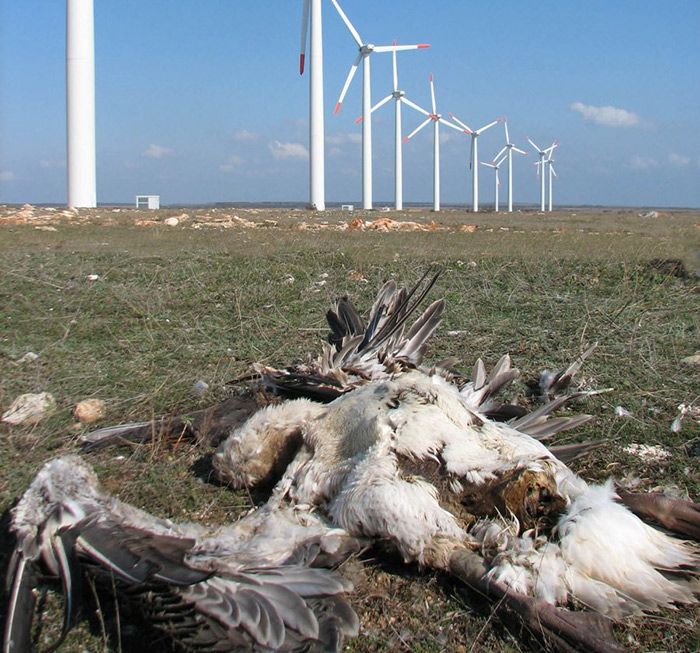Kenyan wind farm could wipe out critically endangered vultures

BirdLife International, Nature Kenya, Kenya Bird of Prey Trust and The Peregrine Fund have collectively expressed concern over a proposal to develop the Kipeto Wind Energy Project, in Kajiado County, Kenya. This is due to the fact that the proposed wind farm will be in close proximity to the nesting sites of two species of Critically Endangered vultures and also close to an important flyway for a vast numbers of migratory birds.
Just 14 km from Kwenia cliffs – the third largest nesting site of Rüppell’s Vultures in Kenya – and 10 km from the White-backed Vulture colony, these wind turbine blades could severely impact these species, both on the edge of extinction. Recent surveys commissioned by the project developers show that collectively these two colonies regularly hold more than 80 pairs of nesting vultures and that both species frequently fly over and occasionally forage at the proposed wind farm site and would be at risk of colliding with wind turbines.
The area has already seen the extinction of Endangered Egyptian Vultures, yet it still holds an impressive number of cliff-dwelling large falcons and Verreaux’s Eagles. The project location lies along the north-south ridge of the Rift Valley Escarpment, which is a prime location for migratory species including globally endangered Steppe Eagles as well as Amur Falcons, Eurasian Hobbys, Lesser Kestrels and White Storks. The site is unique for its density of raptors, and deserving of special protection status, particularly in recognition that African Vultures are vitally important “cleaners of the environment” that help prevent the spread of diseases.
“The proposed wind farm would be disastrous for Africa’s Critically Endangered vultures, and many other important bird species, and contradicts Kenya’s commitment to the Convention on Migratory Species”, said Paul Matiku, Executive Director, Nature Kenya.
The most important industry standard for wind energy projects is careful site selection to minimize the risk of collisions with birds and bats. The project would construct 60 turbines whose blades will be as large as the wings of a passenger jet plane with a spinning velocity at the tip reaching up to 270 Kph. Any bird or bat flying into the blades will die and some are killed just due to the air pressure changes caused by the rapidly spinning blades.
Many species of large birds and bats are well known to be susceptible to collision with commercial-scale wind turbines, and based on the existing scientific evidence, indications are the Kipeto project will result in unsustainable mortality of highly threatened birds.
BirdLife and the other organizations fully support Kenya’s transition to renewable energy including the construction and operation of wind farms, however it is important that these types of projects are implemented responsibly, protecting and maintaining the natural environment.
Birdlife International
15 March 2017
Share this story





